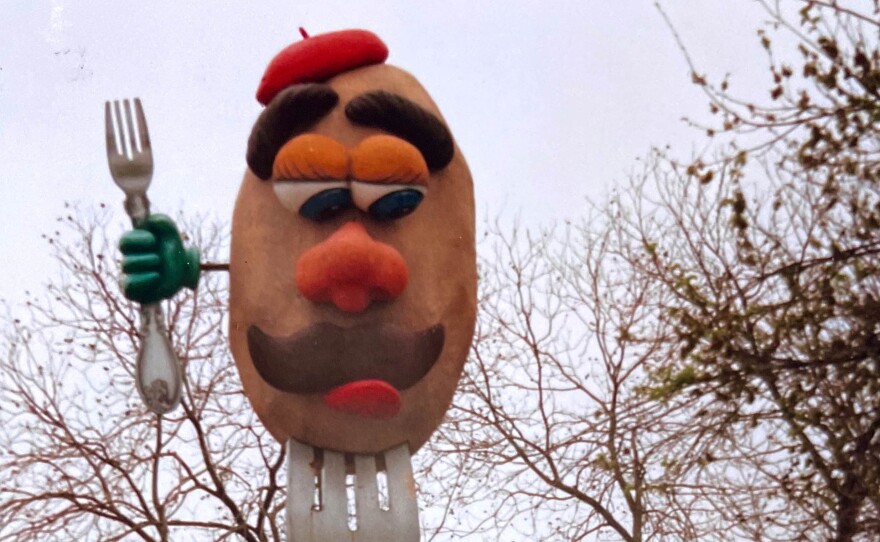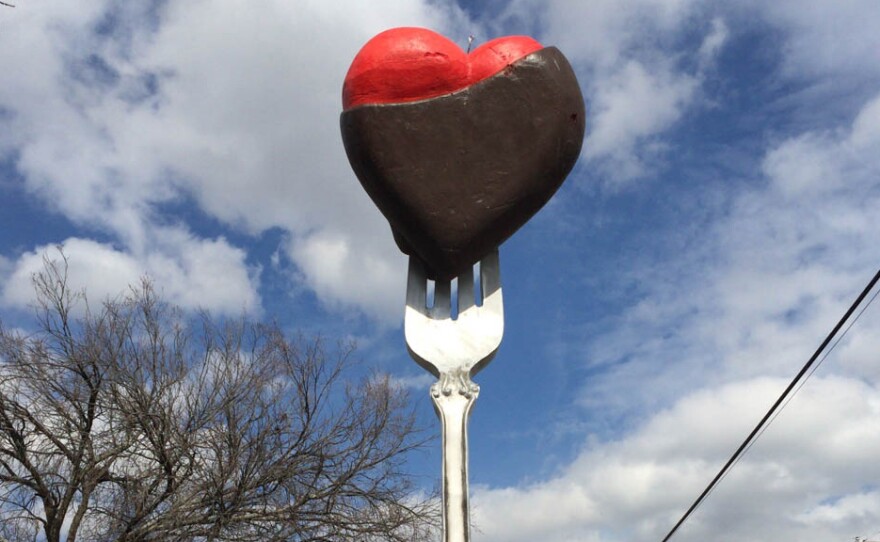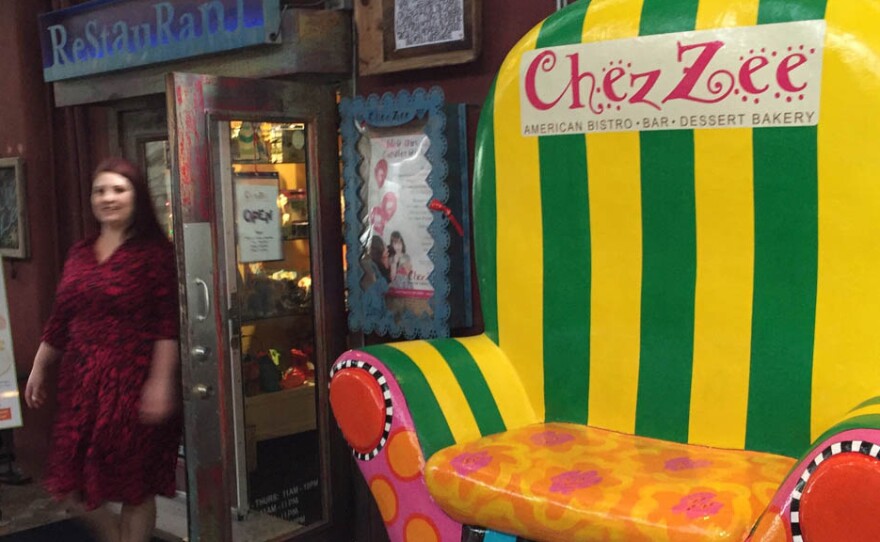This story was originally told at ATXplained Live at Bass Concert Hall on April 29, 2025.
A while back, Ellen Pizarek had a burning question about one of Austin's most well-known businesses — and one of their marketing ploys.
Pizarek wanted to know about the giant fake submarine sandwiches that can be spotted all around town at Thundercloud Subs locations. Each of these sandwiches is about 16 feet long and 4 feet wide. They weigh up to 800 pounds.
“I just want to know where those sandwiches come from,” she said. “Who makes them?”
Anybody who has lived in the city for long enough has surely noticed the sandwiches at some point.
“We got those giant subs probably 25 years ago,” Mike Haggerty, one the owners of Thundercloud, said from the restaurant's headquarters in downtown Austin.

Haggerty said these iconic fake sandwiches tell you what you're looking at.
“You're looking at a submarine sandwich shop," he said. "So great big sub — that says it better than anything.”
Thundercloud has locations all around Central Texas, but only five have these fake sandwiches. The ones seen around town today are the same ones built all those years ago.
When they get weathered and faded, Thundercloud will commission somebody to repair them, and sometimes in this repair process, there will be some surprises.
“When we started rebuilding them, we found multiple giant subs with holes in them that had been made by birds that had nests in them,” Haggerty said. “We never actually saw the birds, but they found it safe to be living in a giant piece of bread.”

The sandwich repair team
A few weeks after I spoke with Pizarek, one of Thunderclouds' subs was getting repaired.
“We’re about 12 feet up in the air working,” Gabriel Portillo, who goes by the artist name Paste, said from on top of scaffolding. “Right now we’re just painting some ham.”

Both Paste and another artist, Erik Ross, are longtime creatives who draw inspiration from culture, the world around them, their personal experiences, their hopes, their dreams.
All of which is to say, this was their first time rebuilding giant fake sandwiches.
“We're kind of winging it a little bit,” Paste said.
“Off-the-record winging it,” Ross added. (This is not how off the record works in journalism, but it's totally fine.)
Paste and Ross had spent hours and hours covering the dilapidated sub in chalky white plaster. And now they were putting the final touches on their work.
Seeing them breathe new life into a fake submarine sandwich was surreal. At the same time, though, these guys were just the repairmen.
The sandwich artist
A few weeks later, I drove out to Wimberley to meet up with Dale Whistler, the artistic mastermind behind the subs.
"I know that everybody loves these sculptures,” he said. “They've done just what I wanted to — create an air of levity at least in the Austin area.”
Whistler first moved to Austin to attend the University of Texas in the late 1970s. He started off as an economics major, but it didn't take him long to realize he could never be some suit-wearing businessman.
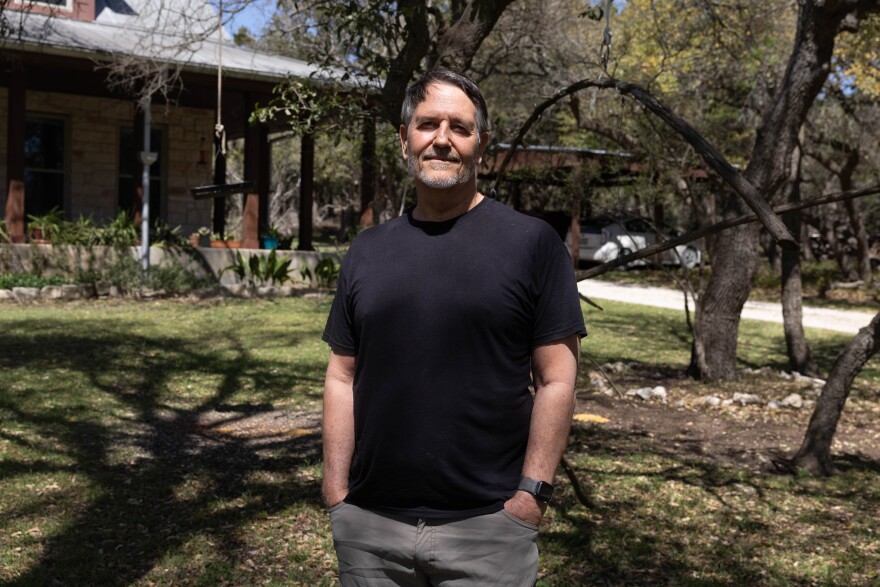
“I was there in my shorts and Birkenstocks, and I thought, hmmmmm there’s kind of a mismatch here,” he said.
Whistler switched his major to art, graduated and then began doing creative work at an ad agency. It was at this phase in his life when he had his big awakening.
He called up a local sign painter and asked if he was looking for an apprentice. The sign painter was interested and invited Whistler over for a talk.
“When I walked into his studio,” Whistler said, “it smelled like the painting studios at UT.”
He quit the ad agency and started apprenticing. Then he started making commercial art.
“Part of what makes these things possible and part of what makes them effective, is to simplify an image,” he said. “It makes them easier to create, but also easier to digest visually as you're driving by at 40 miles an hour.”
The way to simplify these images is by using Styrofoam. Giant chunks of it.
For the average person, this stuff is just packing material. For Whistler, it’s a canvas.
“You start with a big block of foam,” he said. “Then carve into it with a hot wire. It's just kind of like carving marble, except it's really soft.”
After Whistler has the general shapes for his sculptures, he puts them together, coats them in acrylic plaster to make them hard and then paints the exterior in bright colors.
Over the years, Whistler has used this and similar processes to create commercial and noncommercial art that’s on display all around Austin.
He's behind the Hyde Park Gym arm, the green mangia monster, the rotating metal bat near Congress Avenue, the fruit that sits atop the downtown Whole Foods parking garage — along with dozens of other sculptures and murals that Austinites have come to accept as part of the city’s landscape.
Anybody who's been in Austin for long enough has seen and maybe even marveled at Whistler’s work, but his art doesn’t sit in any fancy museums and he has no following of loyal fans.
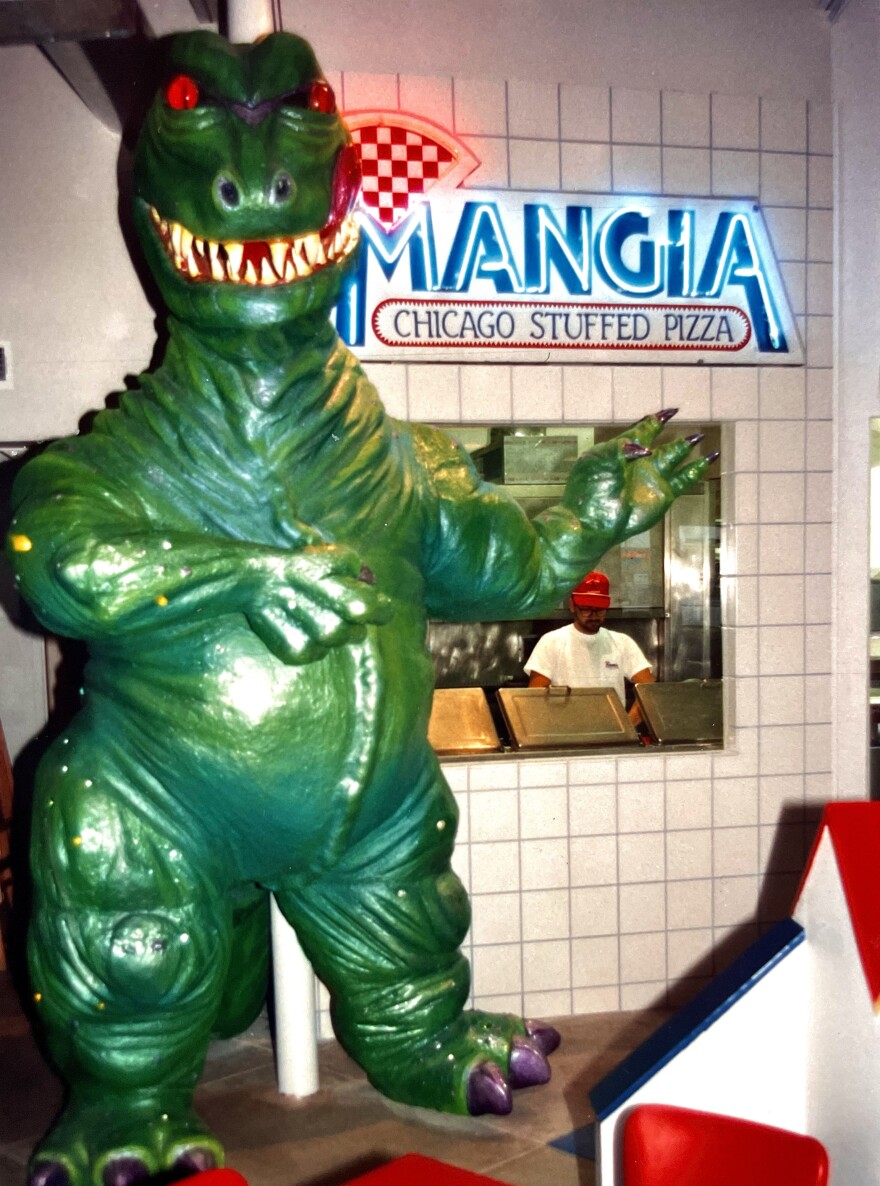
“I think over my career, I’ve gotten four emails —two of them from children who had a class project," he said. "And maybe maybe one call.”
When he steps outside, Whistler is unrecognized.
“One of my wishes is that in doing public work and then knowing me, people would be inspired to do things themselves,” he said.
Whistler has also achieved every artist’s dream of creating things that will outlive them — and we know that he’s created art that will outlive him because a lot of his giant sculptures are made out of a material that is not at all biodegradable.
“The bad thing about Styrofoam is it doesn't go away,” he said. “The good thing about Styrofoam as an art material is that it's easy to sculpt, lightweight, inexpensive and it doesn't go away.”
Whistler is no longer an Austinite. A few years back, he moved out to Wimberley to live with his partner.
He spends his mornings doing yoga, and his days meditating. During our conversation, I got the sense that he felt some guilt about putting thousands of pounds of nonrecyclable material into the environment.
Nowadays, he creates floating mobiles made entirely out of driftwood, rocks, little pieces of wire and some string.
If anybody out there is in the market for some art that won’t last forever, I know a guy. His name is Dale Whistler, and he’s the man behind Austin’s giant fake subs.
Support for ATXplained comes from H-E-B. Sponsors do not influence KUT's editorial decisions.




